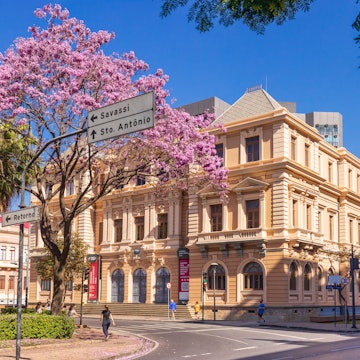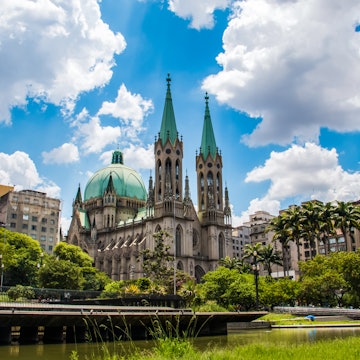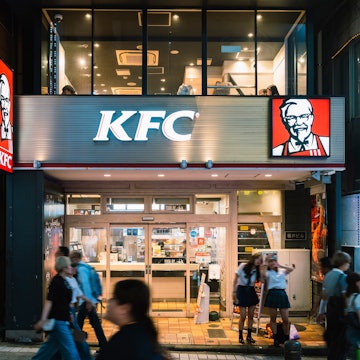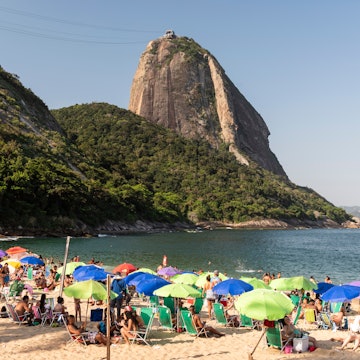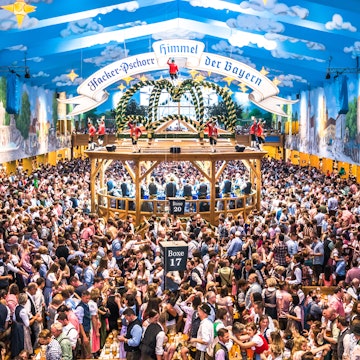

Don’t miss these top experiences in Brazil’s coolest city. Cris Faga/Shutterstock
This pulsating megapolis of 23 million is the cultural, food and nightlife capital of Brazil. With elegant, old-fashioned skyscrapers that rival those in New York City, pockets of grandeur reminiscent of Rome, a culinary scene as dynamic as Tokyo's, the electrified energy of Bangkok, a more LGBTQ-friendly vibe than Amsterdam, and romance and nightlife on par with Paris and Berlin (all fueled by a tropical backbeat of samba and caipirinha) this edgy, cosmopolitan city is where it's at.
São Paulo is a shining, living example of diversity; it's a city where race, religion, skin color and sexuality blend into everyday life. Home to the biggest Japanese and Italian communities outside their respective countries – along with Middle Eastern immigrants and ethnic groups from across Brazil – to call São Paulo “multicultural” is an understatement.
As well as being South America's most progressive city, São Paulo is one of its most cultured and sophisticated. The food scene is internationally renowned, with local genius chefs cooking up Brazilian gastronomic wonders to go with artisanal cocktails in buzzing botecos (neighborhood bars).
It's sporting mad, too – football is an unmatched passion of locals. Throw in a world-class art scene, beautiful green spaces, astonishing street art and festivals, and it's clear this city is at the top of its game. And, the secret to traveling to São Paulo is knowing that the longer you stay, the more there is to see and do.
1. Gasp at São Paulo's iconic Niemeyer skyscraper
What vibrant República lacks in 19th-century charm, it makes up for with its mid-century modernist stunners. Its most notable landmark is Oscar Niemeyer's Edifício Copan (1966); a monumental wave-like S-shape building that's Latin America's largest residential building.
Though its observation deck has been closed for years, you can enjoy its ground-floor bars and restaurants: Cuia Café e Restaurante a trendy cafe offering creative Brazilian dishes by chef Bel Coelho; Bar da Dona Onça, an established local favorite attracting a bohemian crowd for contemporary Brazilian food and cachaça cocktails; Café Floresta for old-school espresso; classy Fel for long-lost cocktails of the 20th century; and elegant Paloma wine bar.
Detour: A short walk away, Edifício Eiffel is another apartment complex designed by Oscar Niemeyer.

2. Browse colorful fruit stands in the Mercado Municipal
One of São Paulo's most popular tourist attractions is a sensory-overloading food market called Mercado Municipal. It is abuzz with vendors, shoppers and foodies who come to sample some of the city’s most renowned dishes.
Inside the grand neo-baroque building (c. 1933) with domed vaulted ceilings and stained-glass windows are stalls with salted cod, wine, cheese and fruit vendors who offer “free” samples (confirm before trying!).
You’ll also find culinary institutions such as Bar do Mané (est. 1933), famed for its epic sandwiches loaded with an obscene amount of mortadella and cheese, and Hocca Bar (est. 1952) for salted-cod pasteis (fried, stuffed pastries). Both pair beautifully with cold beer.
3. Marvel at modern art masterpieces
Arguably São Paulo’s most famous cultural landmark is the much-loved Museu de Arte de São Paulo (MASP), a modern art gallery home to all the big names. And with its unique hanging “crystal easels,” you'll appreciate the art before you even know who created it. The names of Picasso, Monet and Van Gogh are strategically listed on the back of each piece to allow visitors to engage with the works, rather than their reputations.
The building itself is also a major attraction – a brutalist design hoisted above by four red pillars – dividing those who love it or loath it. Its adjoining extension opened in 2024 to significantly increase MASP’s gallery space. Inside, A Baianeira is another reason to visit, with chef Manuelle Ferraz' innovative gastronomic dishes from Bahia and Minas Gerais.
Planning tip: Entry is free on Tuesday as well as the third Thursday of the month. The museum is closed on Monday.
4. Dive tastebuds-first into São Paulo’s pizza scene
São Paulo has the largest Italian ancestry outside Italy, and beyond its love of football, there’s no greater legacy than pizza paulistana (pillowy wood-fired pizzas made with naturally leavened dough and loaded with cheese and toppings).
For its most celebrated spots, head to traditional Italian neighborhoods. In Brás, Castelões is São Paulo’s oldest (opened 1924), famed for its pepperoni; in Bixiga, Speranza has been making its classic margherita since 1958; in Perdizes, Leggera Pizza Napoletana was voted 11th best in the world in 2024 – its margherita is as good as it gets. Bráz Pizzaria is another favorite – ranked fourth among the world's best pizza chains – offering sublime pizza paulistana and pão de calabresa (warm pepperoni bread).

5. Discover São Paulo’s music and nightlife
If there was ever a city to down craft beer and cocktails or catch a life-affirming live gig it’s São Paulo. For fine cocktails reserve a seat at the underground bar in an old bank vault of Farol Santander, Bar do Cofre SubAstor. For a hip, unpretentious Centro rooftop hangout with great city views, head to Balsa Bar. And the hottest downtown late-night venue is the Japanese-inspired rooftop bar, Tokyo, where karaoke complements the cocktail selections.
For a classy NYC-style music bar with live jazz, samba, blues and bossa nova, make a booking at Blue Note on Av Paulista. Sampa’s top spot for live jazz and blues is Bourbon Street Music Club (it's even hosted the likes of BB King and Ray Charles). The Intimate Barretto inside Hotel Fasano is famous for jazz and samba. Another atmospheric bar, inside Rosewood Hotel, Rabo di Galo delivers live samba, plus instruments are provided for punters to jam along. And finally, to absorb São Paulo's live samba scene pop into Vila do Samba and Ó do Borogodó.
If you’re looking for more of a grungy live music scene, Hangar 110 is the city’s premier rock/punk/metal venue for both local and international bands. The legendary shopping mall Galeria do Rock hosts live gigs on its rooftop on the last Saturday of the month. Flying the flag for local independent bands, with upstairs gigs, vinyl and a cool bar, check out FFFront in Vila Madalena. Also in Vila Madalena, A Porta Maldita has a regular schedule showcasing local indie bands and Bar Alto does live bands, DJs and movie nights. It's a trek out to 74CLUB but worth it. The reward is one of São Paulo’s most beloved underground venues. And finally, if you’re shopping for vinyl while you're in São Paulo head to Garagem Beleza.
Local tip: Looking for the LGBTQ+ venues? Head for the bars and clubs around República and Rua Augusta.
6. Ogle stained glass and visit the bakery of the neo-Gothic Mosteiro São Bento
Among the city’s oldest and most important churches, São Bento dates to 1598, though its neo-Gothic facade dates only to the early 20th century. Step inside the church to view its impressive stained glass. Mass (7am weekdays, 6am on Saturday and 10am Sunday) includes Gregorian chanting.
There's a legendary, culturally rich brunch with delicacies by local chefs on the second and last Sunday of each month; booking well in advance. The in-house bakery is also a real treat, as monks use centuries-old recipes to make sought-after breads, cakes, pastries, biscuits and jams.

7. Slurp ramen in São Paulo's vibrant Japanese-Brazilian district
With around 1.6 million paulistas of Japanese descent, São Paulo is home to the world’s largest Japanese diaspora, and Liberdade is its epicenter. It's an atmospheric place to stroll, with red torii gates, lantern-style street lamps, ramen restaurants, izakayas (Japanese-style pub), Asian supermarkets, karaoke bars and Hello Kitty cafés.
The superbly curated Museu Histórico da Imigração Japonesa offers insights into São Paulo's Japanese heritage, telling the story from immigration in 1908, as workers on coffee plantations after slavery’s abolition. Its world-class exhibits include model ships, artworks, kimonos and samurai swords. Nearby, Templo Busshinji is a Sōtō Zen Buddhist temple (often closed to the public), while Jardim Oriental Liberdade is a small Japanese garden with a koi pond.
As you’d imagine, Japanese food is a highlight here with favorites such as Izakaya Issa for sake and gyoza, or Restaurante Lamen ASKA and Lamen Kazu for ramen. For something quirky, try Chest of Wonders, a maid café (exactly what that sounds like) doing sparkling pink drinks; or Coffee Selfie, where baristas emblazon your face on your latte. Sogo Plaza Shopping is the place for all your manga (Japanese comic books), anime and J-Pop needs. Visit Sunday for Praça da Liberdade’s lively food market.
Local tip: This is also an important neighborhood for the Afro-Brazilian community, with activists working to ensure its dark past of enslavement and public executions is not forgotten.

8. Admire Brazil's football obsession
Synonymous with Brazil's national identity, futebol is life, and in São Paulo you’ll find some of the most passionate supporters in the world. At Museu do Futebol you’ll learn firsthand of its cultural importance and the chance to ride all the ups and downs, from the triumph of winning five World Cups to the despair of the nation’s losses.
The museum offers plenty of interactive features, including the chance to take a penalty kick, foosball tables and highlight reels on demand. The women’s team is well represented, too, (women were banned from playing between 1941 and 1979), as you take in the history of the game in Brazil. The museum makes up part of the newly revamped Pacaembu Stadium, which has hosted Series A games since the 1940s.
Planning tip: Entry free Tuesdays; it’s closed on Mondays.

9. Explore the museums and art galleries of Luz
A powerhouse of downtown’s cultural attractions, enigmatic Luz blends urban decay with regal architecture and world-class museums. Nicknamed Cracolândia (Crackland), it's a neighborhood where it's a good idea to take an Uber at night and avoid straying from the beaten track. Fortunately, all these sights are near Luz metro station.
Estação da Luz (c. 1901) is Brazil’s grandest railway station, a lavish British-built structure with a landmark clock tower. It shares space with the innovative Museu da Língua Portuguesa, featuring interactive exhibits on Brazil’s fascinating array of languages.
Across the road, Parque da Luz – the city’s oldest park – is a bit rundown but charming, with sculptures and palm-lined paths. Nearby is Pinacoteca de São Paulo, a stunning neoclassical building (c. 1905) housing 19th-century and modernist Brazilian art. Visit Pina Contemporânea up the road for contemporary art.
To the west, Pina_Estação hosts changing contemporary art shows. In the same building is Memorial da Resistência, a museum dedicated to dissidents imprisoned and tortured by the State Department's Political and Social Order from 1940 to 1983. Next door is the grand Sala São Paulo concert hall.
Detour: A short walk north leads to Museu de Arte Sacra, an 18th-century monastery with ecclesiastical art from the 17th to 20th centuries.

10. Spend an afternoon immersed in Parque Ibirapuera
This wonderful swathe of green space is one of Latin America's great parks. Dotted with world-class cultural attractions, this modernist marvel opened in 1954 to commemorate the city's 400th anniversary.
Comprising 158 hectares of scenic parkland, lakes and fountains, it attracts up to 130,000 people on Sundays, as picnickers, cyclists, skaters and dog-walkers come to escape the city's commotion.
Beyond the greenery, Ibirapuera is a cultural destination packed with blockbuster sights – Museu Afro-Brasil, Museu de Arte Moderna and Museu de Arte Contemporânea da Universidade de São Paulo – and home to the highly anticipated Bienal de São Paulo. With the modernist works of Oscar Niemeyer on show, it's an absolute must for design enthusiasts.
Nearby Museu do Ipiranga is another big attraction, while further south the botanical gardens, zoo and some of São Paulo's more affluent neighborhoods, including Vila Mariana, Vila Olímpia and Moema are added reasons to visit.
11. Check out the views from Mirante SESC Paulista
For a different perspective of Sampa's prized avenue, Av Paulista, head to the 17th floor of the SESC Paulista cultural center, which houses exhibition spaces and stunning rooftop views. Unlike the city’s other observation decks, entry is free (note: it’s closed on Monday) and you'll get a sense of not only Av Paulista’s grandeur, but of the sheer size and scope of São Paulo itself. Seeing just how far the city's high-rises span into the horizon is astounding.
Planning tip: Note that the viewing deck is closed if it's raining; but you can still get views from the terrace bistro over a drink or a meal.
This article was adapted from Lonely Planet’s Brazil guidebook, published in October 2025.






